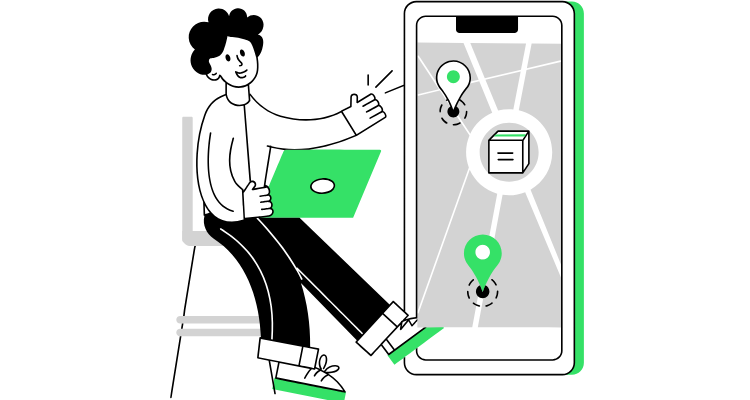In e‑commerce, the post‑purchase experience often makes or breaks customer loyalty. Far from being just an afterthought, the tracking page, where over 90% of shoppers monitor their order’s journey can become a strategic asset when integrated to the seller’s website and transformed into a branded experience that reconverts customers.
Table of Contents
ToggleThe Reality Behind Carrier Tracking Isn’t Enough
Traditional tracking redirects customers to carrier pages, which are:
- Off‑brand and visually disconnected
- Monotonous, typically featuring only bland, non‑branded information
- Transactional dead‑ends with no invitation to re‑engage or upsell
This fragmented journey undermines brand cohesion and misses a prime opportunity to deepen customer engagement.
Branded Tracking Pages Keep Customers in the Moment

A branded package tracking page lets customers track their order within your ecosystem, complete with your logo, design identity, and personalized content. That creates a unified post-purchase experience that reinforces your brand far beyond the checkout click.
Solutions such as Ordertracker make this simple to implement, providing retailers with ready-to-use branded pages that centralize carrier updates while keeping shoppers engaged on your site instead of sending them to a third-party courier page.
Why It Matters: Benefits for Businesses
1. Reduce Customer Inquiries (WISMO/WISMR)
Branded tracking pages equip customers with real‑time data about their shipments, cutting down on “Where is my order?” or “Where is my return?” support tickets by up to 83%. Real‑time tracking reduces post‑purchase anxiety and helps support teams address critical issues preemptively.
2. Increase Engagement and Upsell Potential
Since customers check tracking pages multiple times per order (on average 3–5 times), those visits are golden opportunities to showcase related products, promotions, or return-to-store links. That boosts your chances of repeat business and conversion.
3. Build Loyalty through Transparent Communication
When brands offer clear, branded visibility throughout the delivery process, they build trust and strong emotional bonds. One study found that over 60% of consumers view fulfillment and delivery as highly emotional parts of their purchase journey. This can translate into improved loyalty and retention.
4. Leverage Data for Operational Insights
Order tracking data isn’t just useful to customers—it provides insights into delivery delays, carrier efficiency, and bottlenecks. These performance metrics help retailers refine shipping processes and optimize logistics.
Real Results: Case Examples
- CurrentBody, a beauty retail brand, slashed their WISMO support tickets by 83% and reached 100% tracking accuracy via branded tracking integration.
- The Ridge, a DTC accessories brand, decreased CX tickets by 17% and increased customer satisfaction (CSAT) by 7 points, leveraging branded tracking and automated post‑purchase communications.
These case studies confirm that branded tracking pages are more than a display tactic—they’re a support and experience transformation tool.
Best Practices for Effective Branded Tracking Pages
Here are building blocks for impactful tracking pages:
- Include real-time delivery updates from “Shipped” to “Delivered”, clearly and visually.
- Stay on-brand—carry over your colors, fonts, and logo so the experience feels seamless.
- Add support links directly on the page (FAQs, live chat, returns info) to reduce customer friction.
- Incorporate marketing elements,upsell banners, personalized recommendations, or social links, to turn tracking into upsell opportunities.
- Optimize for mobile, since more than half of online traffic comes from smartphones.
Conclusion
Branded tracking pages go beyond functionality, they enhance the entire post‑purchase experience by reducing support burden, boosting engagement, and reinforcing brand trust. For e‑commerce retailers seeking to turn one of the final touchpoints of the customer journey into a strategic advantage, tracking pages are no longer optional, they’re essential.
By adopting such features, especially through platforms like Ordertracker, retailers gain visibility, increase ROI, and foster lasting customer loyalty, all while minimizing friction in the post‑purchase journey.








